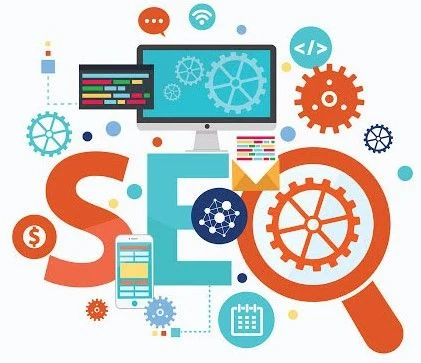At Lifting Group, we are constantly pursuing new knowledge. Our philosophy drives us to work each day to be the best in our sector. This has led us to be a leader in the consultancy and agency industry, making us the best partner for our clients.
In this post, we’d like to share information about linkbuilding with you; this is one of the permanent challenges an SEO manager has to tackle to transform a good strategy into greater visibility, traffic and conversion.
WHAT IS LINKBUILDING?
Linkbuilding is one of the foundations of SEO positioning, which succeeds in raising the authority (ranking) of a page by generating links, leveraging the algorithm of Google.
There are two kinds of linkbuilding: onsite or internal, and offsite or external. In the onsite one, we work on balancing the authority of our page and the flow of information. In the offsite one, we work on the organic positioning and scope of our content.
WHAT KINDS OF BACKLINK ARE THERE?
First of all, we will define a backlink as an external link to a web from another, pointing toward ours. The link is divided into two parts: the URL of the web + an anchor text, the text to be displayed that will take us to the web when we click on it.
To generate clicks, there must be a link at a part of the web accessed by a lot of people, using a striking anchor text to prompt the user to click on it, so that we raise the percentage of clicks. In this case, the anchor text would be the “bait” for getting more direct visits to this second page we have linked.
In positioning a page, the anchor text is an essential element of linkbuilding, and again, the text we use should be in harmony with our SEO positioning strategy, that is, it should be one of the keywords we want to position our page with, though we can also use variants on that word or text.
However, not all links have an anchor text: for example, those which link to an image or a specific place of the web. For instance, when we leave a comment on a blog, one of the sections to fill in will be our web. There we enter the URL of our web, and Google will track it. When we speak of links with an image instead of text, we must bear in mind that the name of the image will play the role of anchor text: by simply using an (alt=”text”) tag, we are telling Google what our web, or the web in question, and the image, are about.
For Google, a link is a recommendation from one web to another, so that the more links a web has, the more relevant Google will deem it to be, because it understands those links as recommendations by other people of the content of your web. Therefore, these links help the SEO positioning of your web, although it isn’t known how many links are necessary to achieve a certain position in a search as this will depend on an endless number of factors. We can, however, take some of these factors into account to optimize our SEO results, working on those which lie in our hands.
WHAT ARE DOFOLLOW AND NOFOLLOW LINKS?
A “nofollow” link always includes the rel=”nofollow” tag in the link. When such a link is included, the Google crawlers do not follow it when they come across it. That is, they do not visit the linked page, so that a link of that kind is not very important for the SEO of your web.
Nonetheless, a “dofollow” link does not have a specific tag, and though we sometimes find rel=”dofollow”, this is not necessary.
This type of link is what the Google robots follow. When they find a “dofollow”, they do follow the link and index the content of the linked page. These are the links which have real value for SEO positioning.
So, does it make sense to do linkbuilding with “nofollow” links? Having links on different internet sites is not only beneficial for our web positioning, but also because it is a way to get to more users, that is, a as a referred traffic source, so that it increases the likelihood people will access our web and consume our content, extending our reach. However, what happens is that links in pages when we have no idea whether they have a good reputation could affect the reputation of our own web. For these cases, the best thing is a “nofollow” link. This is also the case when we have a link in a page dealing with a variety of subjects which are not related to our content: again it’s better to make it a “nofollow” link.
In addition, if our content is of quality and interests the public, a “nofollow” link could give rise to a “dofollow” one, as if somebody accesses our content and likes what they find, even if it has a “nofollow” link, they might decide to give us a link on their own web; if it is “dofollow”, because they trust our reputation, we’ll be delighted, but if they give us a “nofollow” one, this will also be useful as it will bring us to the attention of a wider public.
From what we have seen in this section, it is important to be aware of the reputation of a web to decide which kind of link to use, and also to know which kind of link we should allow in our own web. In general terms, a web with a lot of links is a web with a lot of authority.
WHAT IS LINK JUICE?
This is the “weight” which is transmitted from one zone of the web to another or one web to another. Linkbuilding is how this “weight” or “force” of each page is given or received, shared out or balanced, depending on whether we do it externally or internally.
Calculating the link juice a link confers on you is complicated, even if we do not know exactly, we can get a rough idea easily.
Best of all would be a web with a lot of external links to give us a “dofollow” link on its main page, with this the only link on that page.
The fewer links to other webs it has on its main page, the greater the link juice ours will receive. The more links to other webs there are on a single page, the more evenly distributed the link juice will be, making our share lower.
Linkbuilding is a powerful tool, though nevertheless it is important to know how to use it; if we don’t do it properly, it could be negative for our web. Little by little, linkbuilding is tending to be accomplished as naturally as possible, because Google tends to penalize anything which is artificial or contrived. This is why it is important to undertake quality linkbuilding which will be genuinely positive for our SEO positioning.
